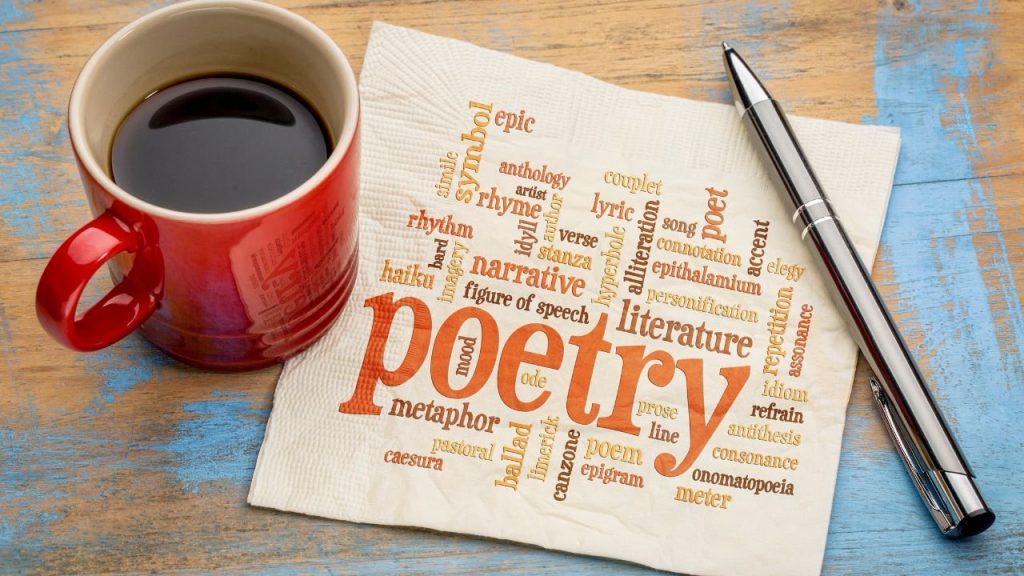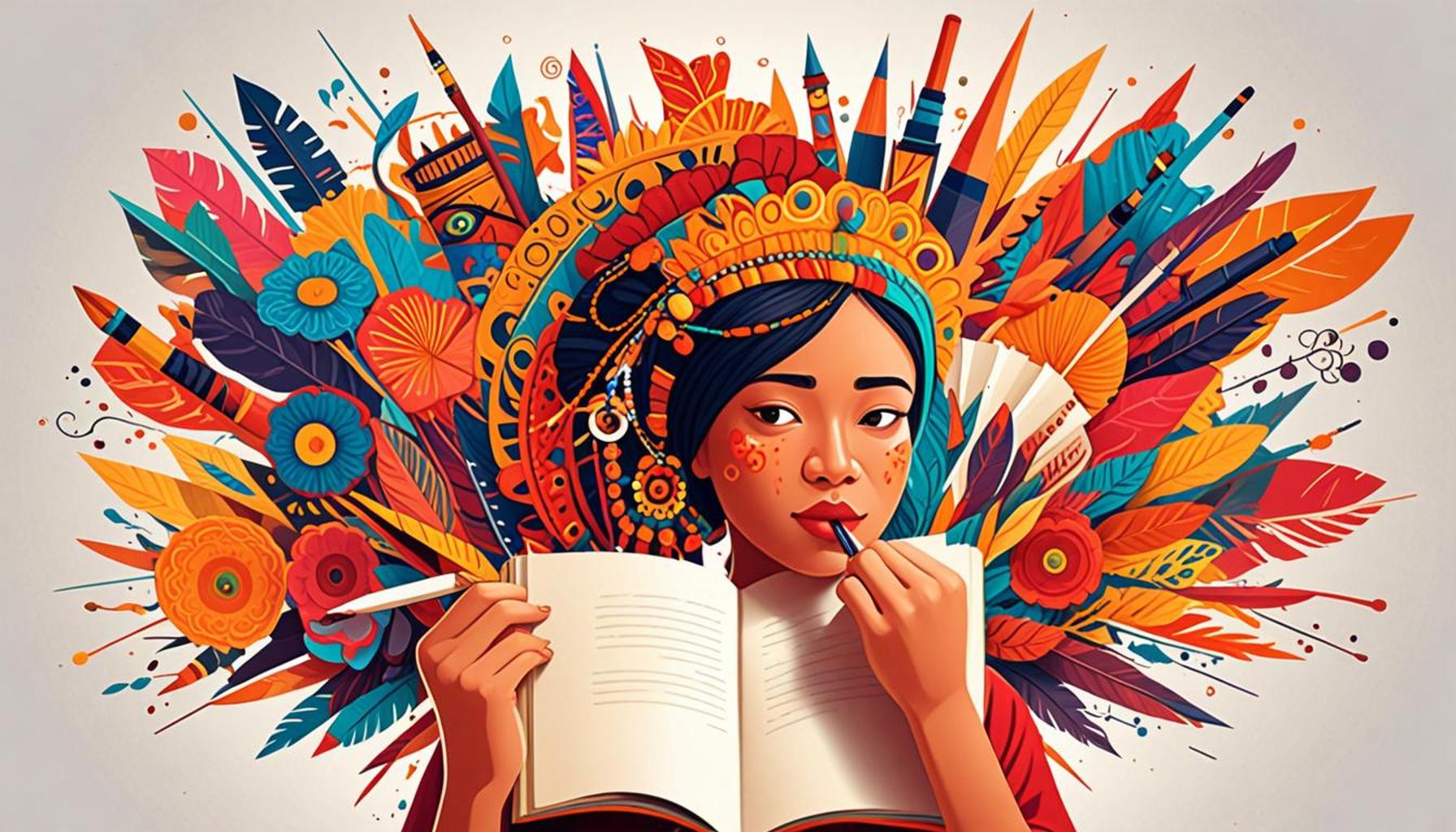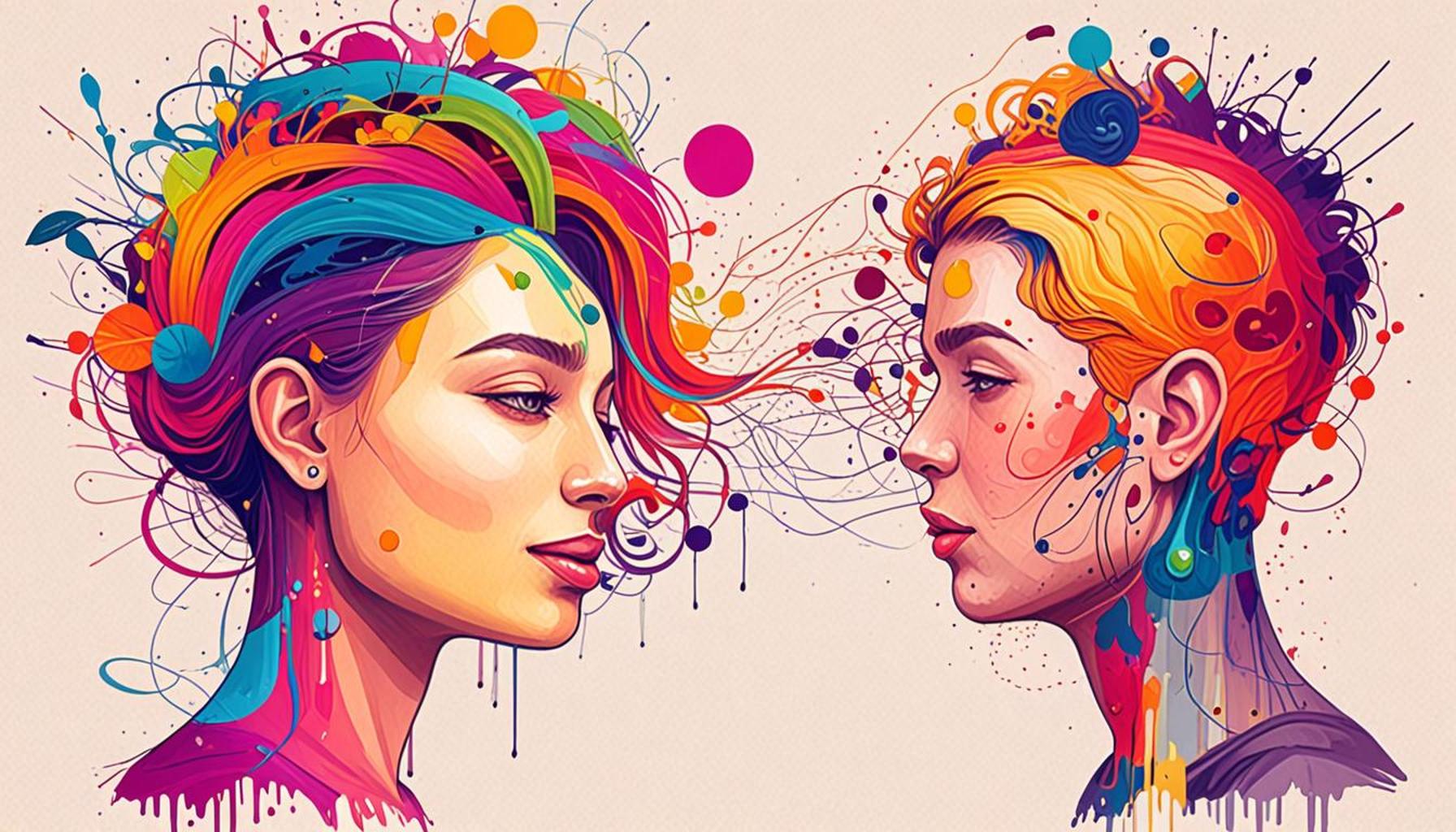Unlocking Poetic Writing Styles Structures to Express Deep Emotions

Unlock Your Creative Potential
In the world of creative hobbies, poetic writing stands out as a unique form of expression that transcends mere words. It offers a medium through which deep emotions can be conveyed, allowing writers to tap into their innermost feelings and experiences. As the practice of writing evolves, so do the styles and structures that poets employ to create their impactful verses.
The Relevance of Poetic Writing
Poetic writing is not just an art; it serves as a means of personal exploration and connection. It invites individuals to explore their creativity while honing their skills in language and emotional expression. Understanding various poetic styles and structures can significantly enhance one’s ability to craft compelling poetry that resonates with readers.
What’s Ahead
In this article, we will delve into the Top 5 poetic styles and structures that can elevate your writing. From traditional forms to modern techniques, each offers unique ways to express the profound emotions we all experience. Prepare to discover new pathways for your creativity as we explore these transformative elements of poetic writing.
YOU MAY ALSO LIKE: Read this other article
Top 5 Poetic Writing Styles and Structures for Deep Emotional Expression
Poetry has long held a revered spot in the pantheon of literary art forms, primarily due to its ability to encapsulate profound human experiences succinctly yet powerfully. Rooted deeply in history, poetry provides a canvas for expressing emotions that cannot be easily captured through other writing styles. This piece delves into the top five poetic styles and structures, exploring how each offers unique ways to articulate deep emotional experiences and connect with readers’ hearts.

5. Free Verse
Free verse, a hallmark of modern poetry, liberates writers from the constraints of consistent meter or rhyme, offering a free-flowing and organic method of expression. In this form, poets are not bound by the expectations of traditional stanzas, allowing their words to spill onto the page in a natural cadence. Despite its lack of formal structure, creating compelling free verse requires mastery over language and evocative imagery.
An excellent example of free verse mastery is Walt Whitman, who used this style to celebrate themes of democracy and individuality in his seminal work, “Leaves of Grass.” Similarly, Langston Hughes wielded free verse to highlight social issues and personal identity during the Harlem Renaissance. Free verse is perfect for beginners and established writers alike, as it allows for deep introspection and unfettered creativity, urging poets to examine and express the intricacies of their emotional landscapes.
The power of free verse lies in its unpredictability and its ability to capture the erratic, often turbulent nature of human emotion. It invites readers to embark on a journey without a map, where every turn reveals new insights and perspectives.
4. Haiku
Originating from Japan, Haiku packs tremendous emotional punch in its brevity. With its distinct 5-7-5 syllabic structure, the form focuses on precision and clarity, making every word, every syllable count. Haikus often connect readers with the transience of nature and the subtleties of human emotion through a snapshot-like quality.
One of the most celebrated haiku poets, Matsuo Basho, effortlessly captured the beauty and fleetingness of the world around him. His work provides a window into the delicate interplay between the external world and our internal states. Although traditionally rooted in themes of nature, modern haikus have expanded to tackle complex human emotions and situations, allowing contemporary poets to explore more personal reflections.
The beauty of haiku lies in its challenge to convey expansive feelings within stringent boundaries, encouraging a focus on the essence rather than the embellishments. It demands conciseness, encouraging the writer to strip down their thoughts to the fundamental emotions they wish to convey.
3. Sonnet
The sonnet, with its roots tracing back to the Italian Renaissance, is admired for its ornate structure and potential for profound emotional expression. Comprised of 14 lines and typically featuring a set rhyme scheme and iambic pentameter, the sonnet is among the most disciplined forms of poetry.
Sonnets have been famously used by poets such as William Shakespeare and Petrarch to explore themes of love, loss, and existential musings. Shakespeare’s “Sonnet 18” famously explores the immortalizing power of verse against the ravages of time. The rigid form of the sonnet allows poets to engage deeply with these themes, guiding their creativity within an established framework.
Despite its constraints, or perhaps because of them, the sonnet challenges poets to innovate within a structure, a dance between form and freedom. It is this mixture of order and emotional turbulence that makes the sonnet an enduringly popular format for writers wishing to resonate with readers on the spectrum of human emotions.
2. Limerick
The limerick, often associated with humor and wit, also serves as a subtle vessel for emotional expression. Its five-line form with an AABBA rhyme scheme encourages a playful interaction with language, allowing poets to juxtapose serious themes with comedic undertones for a unique emotional effect.
Although synonymous with lightheartedness, limericks can, through clever wordplay, tackle significant topics such as human folly or existential pondering. This style provides a platform for exploring deeper sentiments wrapped in humor, engendering thought whilst entertaining.
Consider the limerick as a reminder that emotional expression needn’t always be solemn; sometimes, the deepest truths come wrapped in levity, offering insights through the lens of laughter and satire.
1. Narrative Poetry
Narrative poetry is unique in its storytelling nature, with the power to transport readers through engaging plots and dynamic characters. This style weaves tales that resonate with readers, making emotional connections far beyond what static imagery can achieve.
Renowned examples of narrative poetry include Homer’s “The Iliad” and “The Odyssey.” These epics unravel grand stories filled with drama, heroism, and emotional turmoil. Through these narratives, poets delve into themes of fate, courage, and love, crafting experiences that speak to universal aspects of the human condition.
Narrative poetry allows writers to traverse personal or historical events with depth, offering commentary on the human experience. By painting vivid characters and immersive settings, poets invite readers to walk alongside and feel the emotional tapestry that decorates the worlds within their works.
In conclusion, each of these poetic styles—free verse, haiku, sonnet, limerick, and narrative poetry—presents unique opportunities for articulating the multifaceted nature of human emotion. Whether you’re drawing from structured forms or indulging in free expression, poetry remains a touchstone for exploring the enigmatic, often intense depths of our emotional being. Embrace the nuances of these structures to unlock your poetic potential and engage with readers in a deeply human dialogue.
| Category | Details |
|---|---|
| Imagery | The use of vivid and descriptive language creates mental pictures that evoke strong emotional responses from the reader. Poets often draw on sensory experiences to make their themes resonate deeply. |
| Symbolism | Symbols represent deeper meanings and concepts. By employing symbols, poets can convey complex thoughts and emotions subtly, encouraging readers to engage in interpretation and personal reflection on themes presented. |
| Form and Structure | Different forms, such as sonnets, haikus, and free verse, influence how emotions are expressed. The structure can enhance the rhythm and flow, making the emotional content more impactful and resonant. |
| Emotion and Tone | The tone of a poem can range from joyful to melancholic, significantly impacting the reader’s emotional journey. Poets manipulate tone through word choice and rhythm, allowing an intimate connection between their messages and the readers’ experiences. |
The art of poetry transcends mere words on a page; it serves as a vessel for profound emotional expression and exploration. By weaving together imagery, symbolism, structured forms, and intentional tones, poets can explore the depths of human emotion, drawing readers into a world where feelings are articulated in their most raw and sincere forms.Poets often utilize imagery to create vivid pictures in the minds of readers, a technique that evokes an immediate emotional connection. This strategy helps to communicate the imperfections of human experience, where a simple description transforms mundane moments into extraordinary revelations.Similarly, symbolism allows poets to encode complex ideas within seemingly simple elements, fostering a deeper level of engagement. A bluebird may transcend its littleness, representing melancholy or hope, depending on its contextual foundation within the poem. The form and structure of a poem also play an essential role in conveying emotions. A tightly structured sonnet may reflect rigidity and control, while free verse might embody liberation and spontaneity, underscoring how form can mirror thematic content. Finally, the emotion and tone encapsulate the essence of a poem. By carefully choosing words and controlling rhythm, a poet sets the emotional landscape that guides the reader through varied sensations, from blissful heights to somber depths. Each poem becomes a unique voyage, inviting exploration and reflection on the intricate tapestry of human emotions.
LEARN MORE: This related article may interest you
Frequently Asked Questions about Poetic Writing
What are some common styles in poetic writing?
Poetic writing encompasses a variety of styles, each offering unique ways to express emotions and ideas. Among the most prevalent are sonnets, known for their structured forms and rhyming schemes, and haikus, which are brief and derived from traditional Japanese poetry. Free verse stands out due to its lack of formal constraints, allowing poets to convey personal emotions without the confines of rhyme and meter. Exploring these different styles can lead to a deeper appreciation and application of poetic elements in writing.
How do poets use structure to enhance their emotional expression?
The structure in poetry is not merely a vessel for words but a crucial component that amplifies emotional depth. For instance, the deliberate use of a fixed meter can create rhythm and musicality, evoking specific moods. Conversely, enjambment—the continuation of a sentence beyond the end of a line—can drive urgency and suspense. By manipulating structure, poets artfully enhance the emotional resonance of their work, leading readers through a crafted emotional journey.
What role does metaphor play in poetic expression?
Metaphors are a fundamental tool in poetry, offering rich layers of meaning and insight. By likening one thing to another, metaphors provide deeper comprehension and emotional connection than literal language. For example, referring to time as a “thief” powerfully communicates its swift and often unnoticed passage. Through metaphor, poets can convey abstract emotions and concepts with clarity and impact, making complex emotions universally relatable.
Why is imagery important in poetry?
Imagery serves as the sensory backbone of poetry, transforming mere words into vivid experiences. By engaging the reader’s senses, imagery creates a tangible connection to the poet’s internal world. Descriptive language that appeals to sight, sound, smell, touch, and taste allows readers to visualize scenes and emotions, enhancing the overall impact of the poem. The ability of imagery to evoke potent emotional responses is why it remains a staple of impactful poetic writing.
How can one start writing poetry to explore personal emotions?
Starting with poetry can be both an exciting and daunting endeavor. Begin by reading a diverse range of poets to discover what resonates with you. Practicing free writing can help unearth genuine emotions and themes to explore further. Don’t shy away from experimenting with different structures and styles to find your unique voice. Remember, poetry is an evolving art form that thrives on authenticity, allowing you to delve deep into personal emotions while inviting readers along for the journey.
LEARN MORE: This related article may interest you
Conclusion: The Art of Poetic Writing
In exploring the realms of poetic writing, we delve into a vast landscape of styles and structures that serve as conduits for profound emotional expression. Poetry, with its unique ability to transcend the ordinary uses of language, remains a pivotal form of artistic expression in creative hobbies. Throughout our discussion, we highlighted the importance of understanding various poetic forms and how they contribute to an enriched emotional experience.
The article has emphasized that diverse styles such as haikus, sonnets, and free verse each offer distinct frameworks that can significantly influence the tone and depth of conveyed emotions. While a haiku might capture the fleeting beauty of nature in a minimalist form, a sonnet could offer a more structured exploration of love or existential themes. Free verse, on the other hand, provides the freedom to weave personal narratives without the constraints of traditional rhyme schemes or meter.
Navigating these styles not only enhances one’s poetic skills but also broadens emotional articulation, allowing for a more nuanced and personal connection with readers. The flexibility of poetic structures invites both novice and seasoned poets to experiment, fostering creativity and self-discovery as they explore the depths of their emotions. For those vested in creative hobbies, engaging with poetic writing can be a transformative experience, as it encourages introspection and a deeper understanding of one’s inner world.
In conclusion, poetic writing offers a powerful platform for exploring and sharing the complexities of human emotion. By mastering the various styles and structures, poets can captivate audiences, inspire reflection, and ultimately contribute to the timeless art of storytelling. As enthusiasts of creative hobbies, let us continue to embrace and promote poetic writing as a valuable and enriching pursuit.



